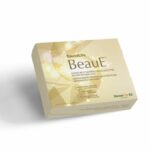Natural Family Planning
When it comes to getting pregnant, some couples choose to let nature take its course. Learn all about natural family planning to achieve or avoid pregnancy.
There are many methods of preventing an unwanted pregnancy, including the use of hormone pills or injections, Intra-Uterine Devices (IUDs) and condoms. Natural family planning or fertility awareness is a technique of birth control that is achieved without the use of any contraceptives.
Natural family planning can help to determine your ovulation cycle and is useful for avoiding pregnancy, but it can also assist in planning for conception. There is a very brief window in the menstrual cycle within which it is possible to get pregnant, and being aware of your fertility cycle can prevent or assist conception.
Methods that are used in natural family planning (also known as the Sympto-Thermal Method, the Ovulation Method or the Billings Method) include the calendar / rhythm method, calculation of basal body temperature method, and the cervical mucus method. These methods can be used in combination to help you monitor your fertility periods, so you can avoid pregnancy or promote it, depending on your personal goals.
Natural family planning can help you to be aware of your own menstrual cycles and it is useful for both planning and preventing a pregnancy. Being aware of your own cycle helps you to determine your own health and well-being. You can avoid many of the risks and side effects of hormone-based contraceptives including contraceptive pills, patches and shots. It is one of the most inexpensive methods: there are few costs involved, besides the purchase of a basal body thermometer and a calendar. It is also a method of contraception readily accepted by most faiths and cultures.
Table of Contents
IS NATURAL FAMILY PLANNING SUITABLE FOR YOU?
Natural family planning is widely used and highly effective, but it does require a great deal of commitment.
In order for natural family planning to work for you, you must:
- Determine if your cycle is regular, and if you are a good candidate. If your periods are irregular, i.e. they are often very late or early, or sometimes skip a month, if you have intermittent spotting or your menstrual periods are longer than a week, this method may not work for you. Natural family planning can also be challenging to manage if you have an illness, or are on certain medications or drugs, or if you have very low or very high bodyweight, as these factors can interfere with your body’s signals. People who travel a lot or keep irregular hours may also find it hard to develop a routine for tracking their body’s changes.
- Commit to recording your body’s changes daily. Daily changes in your body temperature and cervical discharge must be examined and noted down on a calendar. Your monthly periods must also be noted and calculated.
- Use barrier or abstinence methods until your fertility window is established. Every woman’s menstrual cycle is different, and most women will not have the exact number of days in each cycle. You will need at least 3 – 6 months of data to begin determining the number of fertile days in your cycle. Natural family planning will not work if you are using a hormonal contraceptive, as these will change and affect your natural cycles.
- Use abstinence or barrier methods when you are in your fertile period. Natural family planning will make you aware of your fertility, so you can roughly predict when you are ovulating. Around this time, you should avoid having sexual intercourse, or use a condom, if your goal is to prevent pregnancy. For those who wish to become pregnant, this is the target time to have more intercourse.
THE MENSTRUAL CYCLE
The average menstrual cycle is roughly 28 days, although this varies from woman to woman. Most women would have a cycle of between 28 to 32 days. Calculating from the first day of your period, your cycle is 28 days if your period comes again on the 29th day. The length of your cycle can also be altered and affected by factors such as stress, medication, health or pregnancy.
The menstrual cycle includes four phases: menstruation, follicular phase, ovulation and the luteal phase. On Day One of your cycle, the endometrium or lining of the uterus begins to shed, and your period begins. This process normally takes 4 – 6 days.
During the follicular phase, follicle-stimulating hormones (FSH) cause follicles in the ovaries to begin developing. Up to 20 follicles may develop at the same time, but only one will mature and release an egg. The development of the follicles releases the hormone oestrogen, which in turn stimulates the endometrium lining to build up in the uterus.
The follicular phase varies depending on when ovulation (egg release) occurs. Ovulation occurs when the rise in oestrogen triggers an abrupt rise of luteinising hormone (LH). The egg moves from the fallopian tubes towards the uterus. If sperm is present in the uterus, fertilisation will occur, and you will become pregnant. If fertilisation does not occur, the egg will break down within 6 – 24 hours. Your next menstrual cycle begins 12 – 16 days after ovulation.
After ovulation, the follicle begins to produce progesterone, which stimulates the thickening of the endometrial layer. As the egg disintegrates, progesterone levels fall, and the endometrial layer begins to weaken, and finally is shed during menstruation.
YOUR FERTILE PERIOD
Your fertile period begins in the last seven days of the follicular phase before ovulation. This is because sperm can survive in the uterus for up to 7 days in the right conditions. Occasionally, a second egg can be released up to 24 hours from the time of the release of the first egg, therefore a woman’s fertile period can last up to 10 days: 6 days before ovulation, the day of ovulation, and then the next three days after ovulation.
USING FERTILITY AWARENESS
Charting your menstrual cycle is the most important first step in becoming aware of your own fertility. The follicular phase can vary greatly from one cycle to the other, and ovulation may occur at different times during the month, but these methods can be used to provide an estimation of the fertility period:
1. The calendar / rhythm method
In this method, the menstrual cycle is recorded on a calendar to provide a guide or estimation of your fertile period. Record the dates of your period for at least 8 – 12 months, and note the number of days in each menstrual cycle.
Your window of fertility can be determined from the shortest and longest menstrual cycles. From your shortest cycle, subtract 18: ie. if your shortest cycle was 25 days, 18 subtracted from 25 is 7. Therefore, your fertility window will start on the 7th day of your menstrual cycle.
The last day of your fertility window can be calculated by taking 11 away from the number of days in your longest menstrual cycle. If the longest cycle is 30 days, your number would be 19, so your fertility window would last until day 19 of your menstrual cycle.
In this example, days 7 to 19 of your menstrual cycle would be your fertility window, the days in which to avoid sexual intercourse, or use contraceptives in order to avoid pregnancy. For those who wish to conceive a child, this window of fertility is the targeted period for intercourse. It is important to understand that you may not be fertile during all of this time, but it is highly likely that your fertile period will fall within this window. The uncertainly of when ovulation occurs means that sex must be avoided, or barrier methods such as condoms must be used within this entire fertile period, in order that pregnancy be avoided.
Remember to continue to track your menstrual cycles and adjust your window of fertility depending on the length of your cycles every month. Using this method alone may not be accurate if your menstrual cycles are not very regular, or after periods of stress or illness. The calendar method is also less accurate for those whose cycles are regularly less than 27 days long. Used correctly, the calendar or rhythm method can prevent pregnancy about 80 – 87 per cent of the time.
2. Basal body temperature method:
Using a basal body thermometer can help you to determine when ovulation has occurred. Your temperature is slightly elevated after ovulation, and it remains elevated until your next menstrual period. Charting your basal body temperature during your menstrual cycle can help you to predict your next ovulation.
During menstruation and the follicular phase of the menstrual cycle, your body temperature should be around 36.1 to 36.4 degrees Celcius (96 to 98 degrees Fahrenheit). After ovulation, the presence of progesterone raises the body temperature by about 0.1 to 0.2 degrees Celcius (0.4 to 0.8 degrees Fahrenheit). You will know you have ovulated if your body temperature is elevated for three days in a row and is higher than the temperature for the previous six days. Once ovulation has occurred, it is already too late to prevent pregnancy, therefore this method is useful only if charted monthly, and intercourse avoided five days before and three days after the estimated date of ovulation.
To monitor your basal body temperature, it is important to have a specialized fertility thermometer, as the changes are very small and hard to read on other thermometers. It is important to measure your temperature daily at the same time, before getting out of bed and becoming active. Use the same method to take your temperature daily, as readings taken from different areas of the body may differ. Record your temperature on your fertility calendar, and note the pattern that emerges after 4 – 6 months.
Your temperature will generally remain consistent during the first two phases of your menstrual cycle, but you should notice a sharp change immediately after ovulation. Many factors such as illness, lack of sleep alcohol or drug use could also affect your body temperature, therefore this method is not considered wholly accurate unless tracked for a few months beforehand. Some women may find it hard to accurately identify their dates of ovulation, especially if they have irregular menstrual cycles.
3. Cervical mucus method:
The cervix, the opening to the uterus, secretes different types of mucus depending on the phase of the menstrual cycle, and this method can be a very useful tool in determining your periods of fertility. Although most people are understandably squeamish about examining their cervical discharge, it is actually a very accurate method of natural family planning. Once you have become familiarized with the changes that occur in your discharge, you can anticipate and plan for the phases of your fertility cycle very easily.
Using this method, check your cervical mucus daily by inserting your middle finger inside your vagina, gently pushing it in up to your middle knuckle. Alternatively you can wipe the vagina opening from front to back to collect any discharge. Note the colour (cloudy, yellowish, white or clear), consistency (sticky, thick or stretchy) and feel (dry, sticky, slippery, wet, stretchy) of this mucus.
During the menstrual and early follicular phase of the menstrual cycle, there is little discharge from the cervix. As there is no egg to be fertilized, secretions from the cervix at this time serve to deter the progress of sperm. There will be very little discharge, and the vagina will feel drier than at other times.
As you approach ovulation, hormones in your body will rise, stimulating changes including to the secretions from the cervix. You will notice the cervical discharge changing and becoming more moist and sticky, and be slightly whiter and creamier in texture. This indicates the beginning of your fertile period.
Just before ovulation begins, the mucus will become wet and clear and feel stretchy and slippery, and it should be the consistency of raw egg white. This is the period of peak fertility. The discharge at this stage actually helps to nourish and aid the sperm to help it survive the journey to fertilize the egg.
Post ovulation, the mucus returns to being thicker and stickier, and may have a sourish smell. The amount of discharge gradually reduces to leave the vagina dry again as the cycle nears to menstruation.
4. Cervical positioning method
Cervical positioning can also help you to determine if you are ovulating. During ovulation, the cervix becomes softer and wetter, opening slightly to allow sperm to enter and fertilize the egg.
Prior to peak fertility, the cervix will feel hard and dry when touched with the tip of two fingers.
If you examine your cervix regularly, you may notice that it has shifted position and is higher, as well as being soft and wet. You may also be able to feel the opening in the cervix.
Most experts do not recommend this method to be used alone as an indication of fertility, however, as it is very difficult to determine without the proper guidance and experience.
5. Other methods and devices
There are many other methods that are being used to test for fertility that are available in the market. Fertility monitors are available to measure your body temperature and test your urine and saliva. One such device called Persona, has a 94% effectiveness and can relatively accurately predict your fertile period during the month.
Many other devices are designed to help in planning pregnancy, and aren’t useful in avoiding conception. Saliva testing, or ‘ferning’ devices, for example, are designed to detect changes in the salt levels of your saliva as an indication of ovulation. These have not been proven to be an effective indicator of fertility, however, and therefore should not be relied upon in natural family planning.
Ovulation predictor kits or luteinising hormone tests are expensive and usually indicate only if you are fertile, but since they do not indicate the changes in the levels of hormones in the urine, they cannot help when your goal is to prevent pregnancy.
CREATING YOUR OWN FERTILITY CHART
All of the above techniques are proven methods, but for best results, many doctors recommend using them in combination to give a clearer picture of your fertility cycle. The first three methods, calendar / rhythm method, basal body temperature method and the cervical mucus method are the most commonly used and easily implemented techniques, and are the best ones for you to begin monitoring. When a combination of fertility awareness methods are properly used and monitored, effectiveness of birth control is as high as 90% – that is, using this method, only 1 in 10 women would fall pregnant.
SMART TIP!
To start charting your own fertility, try AmericanPregnancy.Org’s online fertility chart at: americanpregnancy.org/ovulation-calendar/
Fertilityet.Org.UK has fertility charts that you can download and print out at: www.fertilityet.org.uk/charts.html
Collect and record information about your menstruation, basal body temperature, cervical fluid and more with Kindara, the top-rated App for charting your fertility, available on the App Store and on Google Play.





















Leave a comment